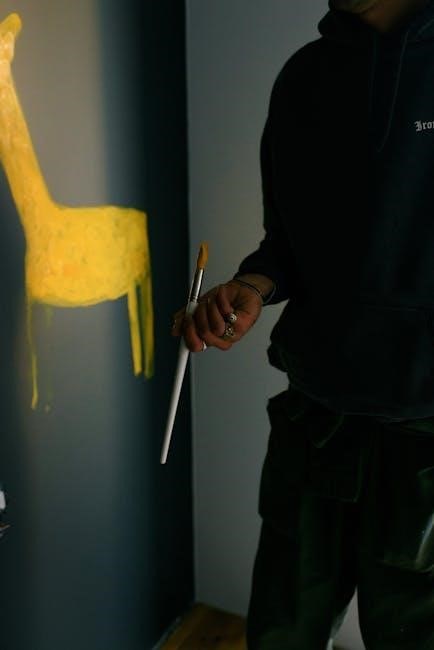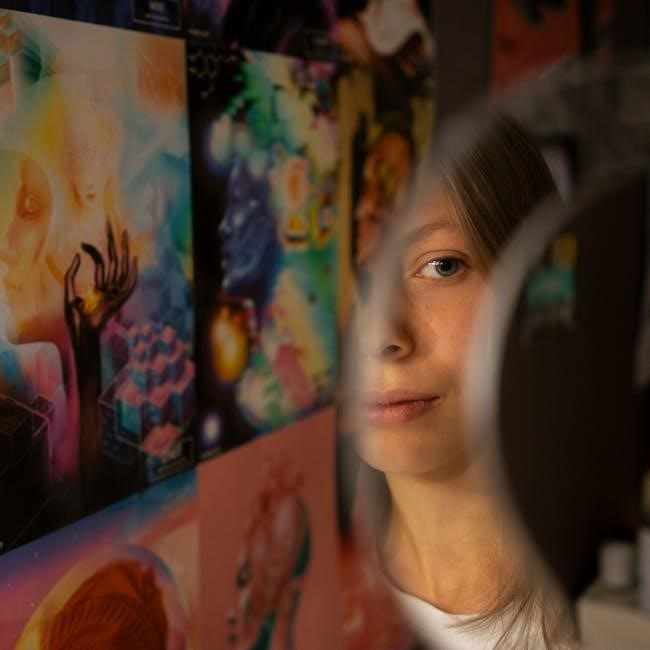

Understanding Sol LeWitt’s Wall Drawing Instructions
Sol LeWitt, a pioneer of conceptual art, revolutionized the way art is created and perceived through his innovative approach to wall drawings. These works, which he began producing in 1968, are not merely visual compositions but are deeply rooted in a set of written instructions that guide their execution. LeWitt’s wall drawings are a testament to his belief that the idea or concept behind a work is more important than its physical realization. By delegating the actual creation of the drawings to others, LeWitt emphasized the democratic nature of art, making it accessible to a broader audience.

At the core of LeWitt’s wall drawings are the instructions he provided. These instructions, often written in a clear and concise manner, serve as the blueprint for the artwork. They can range from simple directives, such as “Draw a straight line,” to more complex sets of rules that dictate the placement of lines, shapes, and patterns. For example, one of his famous instructions reads: “A wall divided horizontally and vertically into four equal parts. Within each part, three of the four kinds of lines are superimposed.” These instructions are not just technical guidelines but are integral to the artwork’s concept and execution.

LeWitt’s instructions are not static; they allow for interpretation and variation. While the overall structure of the drawing is determined by the instructions, the exact execution can differ depending on the person carrying out the work. This flexibility is intentional, as LeWitt wanted his wall drawings to be adaptable and open to multiple interpretations. He often compared his instructions to musical scores, which can be performed in various ways while still retaining the essence of the composition. Similarly, each execution of a wall drawing is a unique interpretation of the original concept.
The process of creating a wall drawing typically begins with a team of draftsmen or artists who follow LeWitt’s instructions. These individuals are not merely technicians but are active participants in the artistic process. They must understand the spirit of the instructions and be able to translate them into a visual form. LeWitt’s instructions often require a high level of precision and attention to detail, but they also leave room for creativity and improvisation. This balance between structure and flexibility is what makes LeWitt’s wall drawings so compelling.
One of the most fascinating aspects of LeWitt’s wall drawings is their impermanence. Since they are executed directly on the wall, they are often ephemeral, existing only for the duration of an exhibition or installation. This impermanence underscores the temporary nature of art and challenges the traditional notion of art as a permanent object. When the exhibition ends, the drawing is erased, leaving only the instructions and documentation as a record of its existence.
LeWitt’s wall drawings have also played a significant role in the preservation of his artistic legacy. The Sol LeWitt Wall Drawing Resource, established after his death in 2007, serves as a comprehensive archive of his wall drawings. This resource includes detailed instructions, diagrams, and documentation of each drawing, ensuring that his work can continue to be executed and appreciated by future generations. The resource is not only a tribute to LeWitt’s innovative spirit but also a valuable tool for scholars, curators, and artists who seek to understand and engage with his work.
In addition to their artistic significance, LeWitt’s wall drawings have also had a profound impact on the way we think about creativity and authorship. By separating the concept of a work from its physical execution, LeWitt challenged the traditional role of the artist as the sole creator of a piece. His wall drawings demonstrate that art can be a collaborative process, where the idea is more important than the individual who carries it out. This approach has inspired countless artists to experiment with new ways of creating and presenting their work.
LeWitt’s wall drawings are also notable for their accessibility. While they are often displayed in galleries and museums, they can also be created in non-traditional settings, such as schools, community centers, and public spaces. This accessibility reflects LeWitt’s belief that art should be available to everyone, not just a select few. By providing clear instructions, LeWitt empowered people from all walks of life to engage with his art and become active participants in its creation.
The instructions for LeWitt’s wall drawings are not only a practical guide for execution but also a window into his artistic philosophy. They reveal his fascination with geometry, pattern, and the relationship between order and chaos. LeWitt’s instructions often explore the interplay between different lines, shapes, and colors, creating complex and visually striking compositions. At the same time, they demonstrate his interest in the process of art-making, where the journey is as important as the destination.
